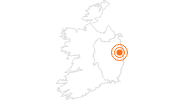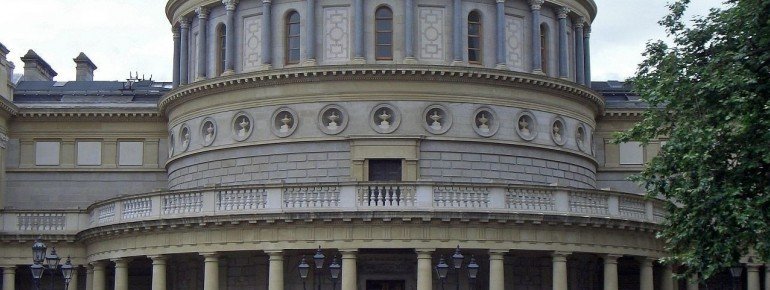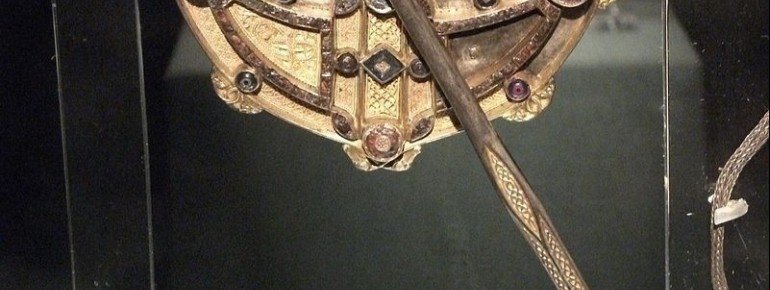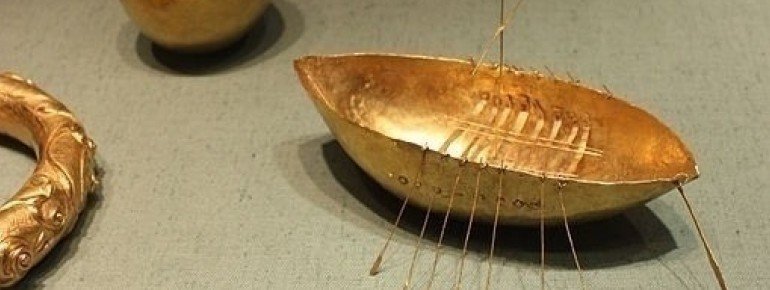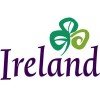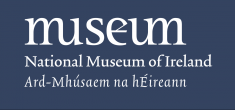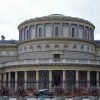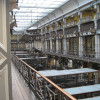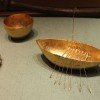Contents
Description
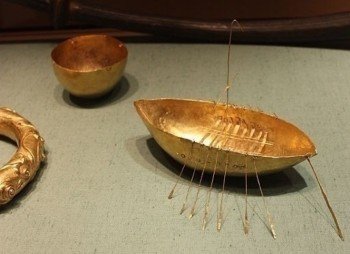
In 1890, the National Museum of Ireland was founded in Dublin. It offers four fascinating sections that are located in different places across Ireland's capital city. Apart from fabulous permanent exhibitions, the museum also grants sufficient room for plenty of special exhibitions – and all for free!
Archaeology
The Archaeology section is the heart of the museum. It is filled with more than 2 million (!) prehistoric artefacts that were found on Irish soil, among which you find the world-renowned collection of medieval church samples.
The exhibition “The Treasury” contains iconic artefacts such as the Ardagh Chalice, the Tara brooch and the Derrynaflan treasure. Those unique remains represent the treasures of early medieval Ireland. You may observe how pagan and Christian traditions easily intertwined based on these symbols.
The gallery is structured chronologically. This way the development of Irish art from the Iron Age up and including to the 12th century can be fully seen and kept track of. Research is done on developments that happened at the time of transition from paganism to Christianity – a period known to be the golden era for Irish art and crafts.
The second gallery is dedicated to the early medieval book of psalms, also known as the Faddan More Psalter. The manuscript, which can be dated back to 800 AD, was found by accident on marshland back in 2006.
With the aid of numerous artefacts, the third gallery presents the world of early medieval crafts, focusing on the production and decoration of metal work.
The "Kingship and Sacrifice Exposition" presents remains of the corpses that were found in the marshlands in 2003, dating back to the Iron Age. The results of an analysis conducted by 35 specialists gives you an overview of the remains and funerary goods.
One of the most prestigious and significant collection in Europe is without a doubt the Irish gold exhibition: Ór. During the early Bronze Age, the most important products were made of gold plating. Around 1200 BC, the process of gold plating was developed as the huge variety on spiral rings shows. 300 years later the style had changed, though. Solid gold objects such as bracelets were made by manual work and dresses with dramatically large gold plating were tailored.
In the fascinating section on Ancient Egypt, you find most samples deriving from the excavation period in Egypt between 1890 and 1920. Apart from the gold-plated and colourfully ornamented coffin of the mummy Tentdiebu, you find the other exhibition sample to be a highlight the model of a wooden boat from the early 12th century. Furthermore, there is an array of important steles funerary goods, jewellery and household items.
Last but not least, one shouldn't forget about the "Viking Ireland Exhibition", covering the two decades spanning excavation period between 1962 and 1981, conducted by the Dublin Museum. This section shows the impact that Vikings had on the distinctive Irish art styles produced between the 9th and 12th century. In addition, this particular period of Irish history is determined by metal works, silver jewellery and funerary goods, all of which find their place in the exhibition.
Decorative Arts & History
The galleries entirely focus on Irish history and its decorative art. You will be taken back in time by exploring the replicated rooms. “The Way We Wore” shows you how the people once dressed and groomed themselves in Ireland. You additionally have the chance to interactively discover the history of Ireland, what's also fun for children!!
Country Life
As popularly known, life in rural Ireland is usually depicted in a very romantic way. The “Romanticism & Reality” exhibition shows that reality once looked entirely different. Survival depended on detailed skills in crafts, aptitude and creativity as the section on “Trades and Crafts” shows. Alongside these skills, the significance of histories, myths and traditional believes outside institutional religion are presented here.
“The Natural Environment” is an exhibition examining how rural life in Ireland depended on the natural surroundings and resources. By taking a closer look on domestic architecture as well as usage of various resources, this becomes quite obvious.
Objects mostly reflecting how independence from England was gained are shown in the gallery “The Times”. Wicker baskets, wooden furniture and clay pots are only a few items among many others shown.
At “Activities in the Home” exactly these objects of everyday use are presented apart from various stoves.
To have an authentic view on how farmers' work once looked like, the “Working on the Land and Water” exhibition presents various work equipment alongside goods of early cultivation.
Natural History Museum
The exhibition on ground floor is dedicated to the endemic animals of Ireland such as the impressive skeleton of a giant venison, various mammals, birds and a fascinating maritime world.
The upper floors of the building are concentrated on the development of the great variety of the animal world, which is subdivided into taxonomic groups. Apart from skeletonised and stuffed animals, there are many interactive hubs installed allowing you to explore this segment even further.
How to get there
By car
Dublin Airport – Exhibitions in Dublin
Take the Swords Road/ R132 in the direction of Dublin. After appr. 1.9 mi (3 km) you take a left turn at Santry Park taking you straight onto Coolock Ln/ R104. At the roundabout, you take the third exit leading to the N1 in the direction of An Lár/ City Centre. Follow the road for about 3.4 mi (5.5 km) until it changes to King Street/ R804. You then turn left into the one way road Queen Street/ R804 and right at the first junction you turn left once again. And here you are at the Decorative Arts & History building. In order to get to the Archaeology and National History building, you just need to cross the river Liffey and then pass St. Patrick's Cathedral sticking to the left. On the left side, you find the other two exhibition sections to be in close proximity to each other.
Dublin Airport – Country Life (Castlebar)
The “Country Life” exhibition is located alongside Ireland's west coast, appr. 230 km away from the airport. You first take the M50 and then keep driving on the M4 in the direction of Silgeach/ Silgo/Cathair na Mart/ Westport. At Heathstown, you take the third exit out of the roundabout in order to get onto Dublin Road/ R393. Once in Longford, you follow the road in the direction of N63 to get onto the N5. After roughly 13 mi (21 km), you leave the roundabout via the first exit (Church Street/ N5). You stay on this very road for about 50 mi (80 km). At Chancery, you take a right turn and get onto L1719 and after appr. 1 mi (1.5 km) the museum appears on your left-hand side.
By public transport
Dublin Airport – Exhibitions in Dublin
From the airport you walk to the next station which is “Great Southern Hotel” and only 110 yd (100 m) walking distance away. You may either take bus line 700 or 747.
If you decide to get on the 700, you stay on it for four stations and get off at “Trinity College”. You then change to line 145, taking you in the direction of Heuston Station. From here it's only five stations until you arrive at the Guinness Store, which is only 330 yd (300 m) away from your destination, the museum.
If you opt for bus line 747, you change at Northwall to the Red Line leading towards “Tallaght”, taking you straight to the museum.
